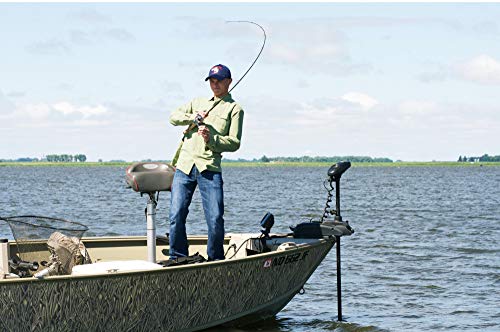Anyone can catch fish with the right tips and techniques! In this blog post, we will provide some basic fishing tips for beginners. We’ll discuss how to choose the right gear, where to find fish, and how to set the hook. So whether you’re a first-time fisherman or just looking to brush up on your skills, read on for some essential advice!
Fishing is a popular pastime all over the world. Though it might seem like a difficult task, with the right tips and techniques, anyone can catch fish! In this blog post, we will provide some basic fishing tips for beginners. We’ll discuss how to choose the right gear, where to find fish, and how to set the hook. So whether you’re a first-time fisherman or just looking to brush up on your skills, read on for some essential advice!

Choosing the Right Gear
When it comes to choosing fishing gear, there are a few things you need to consider. The most important factor is what type of fishing you plan on doing. There are many different types of fishing, each with its own set of specialized gear. For example, if you plan on fly fishing, you’ll need a different rod, reel and line than if you plan on using bait or lures.
Another important factor to consider is your target species. Some fish are easier to catch than others, and some require specialized gear in order to be successful. For example, catfish are notorious for being difficult to catch; they often require heavy tackle and live bait. Conversely, panfish such as bluegill can be caught with very light tackle and can be caught using a wide variety of baits and lures.
Once you’ve decided what type of fishing you want to do and what species you’re targeting, it’s time to select the right gear. Here are some basic guidelines:
• Rods: When choosing a rod, consider the length, weight and action. The length should be appropriate for the type of fishing you’re doing – shorter rods are best for trout fishing while longer rods are better for bass fishing. The weight should be appropriate for the size of fish you’re targeting. Heavier rods are better for larger fish while lighter rods are better for smaller fish. The action of the rod refers to how much bend it has when loaded with weight. A fast action rod bends near the tip while a slow action rod bends near the handle. Generally speaking, slower action rods are better for beginners as they are more forgiving and less likely to snap under pressure.
• Reels: The reel is arguably the most important part of your setup – after all, it’s responsible for holding your line! When choosing a reel, consider the size (in terms of diameter and spool capacity), weight and drag system. The size should be appropriate for the type of fishing you’re doing and the fish you’re targeting. For example, smaller diameter reels are better for lighter tackle while larger diameter reels can hold more line and are better for heavier tackle. The weight is important as well – lighter reels are easier to carry around all day, but heavier reels tend to be more durable. The drag system is what controls how much resistance there is when a fish pulls on the line. A good drag system will allow you to fight larger fish without fear of breaking your line.
• Lines: There are many different types of fishing lines available, and each has its own set of advantages and disadvantages. The most important factor to consider is the strength – you want a line that’s strong enough to handle the fish you’re targeting. Other factors include abrasion resistance (important if you’re fishing in rough conditions), visibility (you want a line that’s visible in the water so you can see bites) and stretch (some lines stretch more than others, which can be advantageous or disadvantageous depending on the situation).
• Hooks: The type of hook you use will be determined by the type of fishing you’re doing and the fish you’re targeting. There are many different sizes and shapes of hooks available, so it’s important to select the right one for the job. For example, larger hooks are better for catching larger fish, while smaller hooks are better for catching smaller fish. Similarly, certain shapes of hooks work better for certain types of bait or lures.
Now that we’ve gone over some basics, let’s talk about where to find fish.
The most important factor to consider when trying to catch fish is where they are located. Different fish live in different parts of lakes, rivers and streams – some near the surface, some near the bottom and some in the middle. Similarly, different fish prefer different types of habitat. For example, some fish prefer areas with lots of vegetation while others prefer open water. The best way to find fish is to do some research on the species you’re targeting and try to identify their preferred habitat. Once you’ve done that, it’s simply a matter of spending time in that type of environment and trying different techniques until you find something that works.
Fishing is a great activity for people of all ages and skill levels. Whether you’re just getting started or you’ve been fishing for years, there’s always something new to learn. We hope this article has given you some useful tips on how to catch fish – good luck out there!
